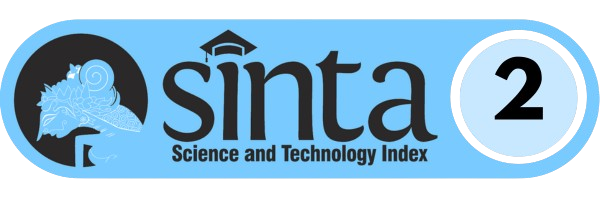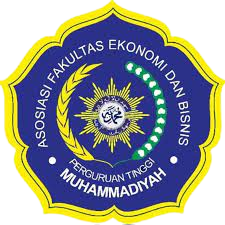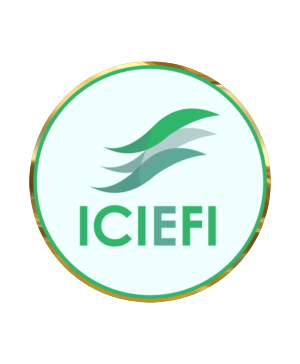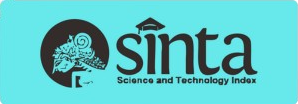Analyses of Relationship between Economic Growth and Zakat Distribution: Some Comparative Studies between Indonesia and Malaysia
DOI:
https://doi.org/10.24269/ekuilibrium.v19i1.2024.pp18-41Abstract
Zakat serves as an economic instrument within the framework of Islam and can serve as a substantial source of revenue for the state, contributing to the funding of various expenditures. In contrast to alternative revenue streams, zakat possesses explicit and comprehensive guidelines on its acquisition and allocation. The state bears the task of maximizing the efficiency of zakat institutions to effectively mobilize and allocate zakat monies as a catalyst for economic development. Indonesia utilizes a bottom-up approach for the collection of zakat, whereas Malaysia follows a top-down approach. Therefore, the present investigation focuses aims to examine the impact of zakat distribution on economic development in two selected nations. The examination focused on many variables, including GDP, Gini index, inflation, and zakat distribution. The period for the analysis spanned from 2001 to 2019, and the ARDL approach is being used for the purpose of doing data analysis. The findings suggest that the distribution of zakat did not exert a statistically significant impact on economic development, either in the short-term or long-term, within the contexts of both nations. Therefore, there is a need to promote the professional and efficient management of zakat to enhance its collection and facilitate its effective distribution.
References
Abdillah, K., Handoyo, R. D., & Wasiaturrahma, W. (2020). The Effect of Control Corruption, Political Stability, Macroeconomic Variables on Asian Economic Growth. Ekuilibrium : Jurnal Ilmiah Bidang Ilmu Ekonomi, 15(2), 161. https://doi.org/10.24269/ekuilibrium.v15i2.2678
Adeniyi, F. O. (2020). Impact of foreign direct investment and inflation on economic growth of five randomly selected Countries in Africa. Journal of Economics and International Finance, 12(2), 65–73. https://doi.org/10.5897/jeif2020.1031
Adnan, N. I. M., Mohd Kashim, M. I. A., Endut, W. A., Ismail, S., Abd. Khafidz, H., Furqani, H., Ab Rahman, Z., Mohd Noor, A. Y., & Zakaria, M. B. (2020). Zakat distribution through micro financing: Hukm (Islamic ruling) and form of aqad (contract). Journal of Critical Reviews, 7(5), 1032–1038.
Ahmad, T. (2022). Investigating the relationship between inflation and economic growth: a case of Pakistan. Acta Pedagogia Asiana, 1(1), 1–8. https://doi.org/10.53623/apga.v1i1.64
Akmar, I., & Nasri, M. (2017). Productive zakat distribution by zakat institutions in Malaysia. International Journal of Academic Research in Business and Social Sciences, 7(3), 554–565. https://doi.org/10.6007/IJARBSS/v7-i3/2758
Anggraini, R. (2016). Analisis pengaruh dana zakat, infaq, shodaqoh (ZIS) dan inflasi terhadap pertumbuhan ekonomi di Indonesia pada periode 2011-2015 (Bachelor thesis). Retrieved from https://repository.unair.ac.id/55712/13/FEB.EI.%20133-16%20Ang%20a-min.pdf
Ardiyansyah, H. (2017). Pengaruh inflasi terhadap pertumbuhan ekonomi di Indonesia. Jurnal pendidikan ekonomi (JUPE), 5(3), 327–340. https://doi.org/https://doi.org/10.26740/jupe.v5n3.p%25p
Arsyad, L. (1997). Ekonomi Pembangunan. Yogyakarta: Sekolah Tinggi Ilmu Ekonomi YKPN.
Asfarina, M., Ascarya, A., & Beik, I. S. (2019). Re-estimating the zakat potential in Indonesia based on classical and contemporary fiqh approaches. Journal of Islamic Monetary Economics and Finance, 5(2), 387–418. https://doi.org/10.21098/jimf.v5i2.1068
Atmadja, A. S. (1999). Inflasi di Indonesia: sumber-sumber penyebab dan pengendaliannya. Jurnal Akuntansi dan Keuangan, 1(1), 54–67. https://doi.org/10.9744/jak.1.1.pp.54-67
Atmanti, H. D. (2017). Kajian teori pemikiran ekonomi mazhab klasik dan relevansinya pada perekonomian Indonesia. Jurnal Ekonomi & Bisnis, 2(2), 511–524.
Azam, M., & Khan, S. (2020). Threshold effects in the relationship between inflation and economic growth: Further empirical evidence from the developed and developing world. International Journal of Finance and Economics, 27(4), 4224–4243. https://doi.org/10.1002/ijfe.2368
Baharudin, A. H., Ismail, R. A. G., & Ghani, N. H. M. (2016). Economic growth and disparity issues in income and education: a causal enquiry on ASEAN countries. Institutions and Economies, 8(3), 1–36.
Basuki, A. T., & Prawoto, N. (2015). Analisis regresi dalam penelitian ekonomi dan bisnis. Depok: PT Rajagrafindo Persada.
Baum, S., & Smith, A. (1992). Poverty, inequality, and the role of government: what would Adam Smith say?. Eastern Economic Journal, 18(2), 143–156.
Beik, I. S., & Qurroh, A. (2015). Fiqh of Asnaf in the distribution of zakat: case study of the national board of zakat of Indonesia (Baznas). AL-INFAQ: Jurnal Ekonomi Islam, 6(2), 201–216.
Bonsu, C. O., & Muzindutsi, P.-F. (2017). Macroeconomic determinants of household consumption expenditure in Ghana: a multivariate cointegration approach. International Journal of Economics and Financial Issues, 7(4), 737–745.
Castells-Quintana, D., & Royuela, V. (2017). Tracking positive and negative effects of inequality on long-run growth. Empirical Economics, 53(4), 1349–1378. https://doi.org/10.1007/s00181-016-1197-y
Datta, K., & Mukhopadhyay, C. K. (2011). Relationship between inflation and economic growth in Malaysia- an econometric review. International Proceedings of Economics Development and Research, 4, 415–419.
Djadjuli, R. D. (2018). Peran pemerintah dalam pembangunan ekonomi daerah. Jurnal Dinamika: Jurnal Ilmiah Ilmu Administrasi Negara, 5(2), 8–21.
Forbes, K. J. (2000). A reassessment of the relationship between inequality and growth. American Economic Review, 90(4), 869–887. https://doi.org/10.1257/aer.90.4.869
Gokal, V., & Hanif, S. (2001). The relationship between inflation and inflation uncertainty in the UK: 1885-1998. Economics Letters, 74(1), 77–83. https://doi.org/10.1016/S0165-1765(01)00522-5
Hakim, B. R. (2016). Analisis terhadap undang-undang nomor 23 tahun 2011 tentang pengelolaan zakat (perspektif hukum Islam). Syariah Jurnal Hukum dan Pemikiran, 15(2), 155–166. https://doi.org/10.18592/syariah.v15i2.552
Hasan, A., Hassan, R., Engku Ali, E. R. A., Engku Ali, E. M. T., Abduh, M., & Noordin, N. H. (2019). A proposed human resource management model for zakat institutions in Malaysia. ISRA International Journal of Islamic Finance, 11(1), 98–109. https://doi.org/10.1108/IJIF-10-2017-0036
Hasan, M. M., Hossain, B. M. S., & Sayem, M. A. (2022). Determining the impact of economic factors to the gross domestic product in Bangladesh. International Journal of Economics and Financial Issues, 12(1), 37–40. https://doi.org/10.32479/ijefi.12686
Hidayat, A. S., Suman, A., & Kaluge, D. (2014). The effect of interest rate, inflation and government expenditure on economic growth in Indonesia period of 2005- 2012. Journal of Economics and Sustainable Development, 5(15), 2222–1700.
Joshi, R. (2017). Assessing the impact of income inequality on economic growth. The Indian Economic Journal, 65(1–4), 1–26. https://doi.org/10.1177/0019466217727811
Karim, Z. A. (2010). Monetary policy and firms’ investment in Malaysia: a panel evidence. IIUM Journal of Economics and Management, 18(2), 221–253.
Khasandy, E. A., & Badrudin, R. (2019). The influence of zakat on economic growth and welfare society in Indonesia. Integrated Journal of Business and Economics, 3(1), 65. https://doi.org/10.33019/ijbe.v3i1.89
Kuncoro, M. (2010). Dasar-Dasar Ekonomika Pembanguna. Yogyakarta: UPP STIM YKPN.
Kusumatrisna, A. L., Sugema, I., & Pasaribu, S. H. (2022). Threshold Effect in the Relationship between Inflation Rate and Economic Growth in Indonesia. Buletin Ekonomi Moneter Dan Perbankan, 25(2), 117–132. https://doi.org/10.21098/bemp.v25i1.1045
Majumder, S. C. (2016). Inflation and its impacts on economic growth of Bangladesh. American Journal of Marketing Research, 2(1), 17–26.
Mallik, G., & Chowdhury, A. (2001). Inflation and economic growth: evidence from four South Asian countries. Asia-Pacific Development Journal, 8(1), 123–135.
Mannan, M. A. (1993). Teori dan Praktek: Dasar-Dasar Ekonomi Islam. Yogyakarta: PT. Dana Bhakti Wakaf.
Maulidiyah, P. K. (2018). Pengaruh dana ZIS dan faktor makroekonomi terhadap pertumbuhan ekonomi Indonesia 2010-2017 (Bachelor thesis). Retrieved from https://repository.uinjkt.ac.id/dspace/bitstream/123456789/41858/1/PUTRI%20KHIKMATUL%20MAULIDIYAH-FEB.pdf
Maulid, L. C., Bawono, I. R., & Sudibyo, Y. A. (2021). The Effect of Government Expenditure on Economic Growth in Indonesia. Ekuilibrium : Jurnal Ilmiah Bidang Ilmu Ekonomi, 16(1), 24. https://doi.org/10.24269/ekuilibrium.v16i1.3172
Mawaddah. (2011). Analisis pengaruh jumlahuang beredar (JUB) pembiayaan mudharabah (PM) dan kontribusi pertumbuhan zakat, infak dan sedekah (ZIS) terhadap pertumbuhan ekonomi di Indonesia 2007-2010 (Bachelor thesis). Retrieved from https://repository.uinjkt.ac.id/dspace/bitstream/123456789/3069/1/MAWADDAH-FEB.pdf
Mdingi, K., & Ho, S. Y. (2021). Literature review on income inequality and economic growth. MethodsX, 8, 101402. https://doi.org/10.1016/j.mex.2021.101402
Melati, I., & Kurniawan, M. L. A. (2023). Money Demand Analysis through Business Cycle in Indonesia. Ekuilibrium : Jurnal Ilmiah Bidang Ilmu Ekonomi, 18(2), 203–212. https://doi.org/10.24269/ekuilibrium.v18i2.2023.pp203-212
Mulyani, E., Suripto, S., Nuzia, W. Z., & Fatmasari, R. (2017). Ekonomi Pembangunan. Yogyakarta: Universitas Negeri Yogyakarta.
Munir, K., & Bukhari, M. (2020). Impact of globalization on income inequality in Asian emerging economies. International Journal of Sociology and Social Policy, 40(1–2), 44–57. https://doi.org/10.1108/IJSSP-08-2019-0167
Munir, Q., Mansur, K., & Furuoka, F. (2009). Inflation and Economic Growth in Malaysia — A Threshold Regression Approach. ASEAN Economic Bulletin, 26(2), 180. https://doi.org/10.1355/ae26-2d
Mustopa, A. (2020). Nilai tukar (kurs), pengeluaran pemerintah, investasi dan zakat, infaq, sedekah (ZIS) terhadap pertumbuhan ekonomi di Indonesia (Bachelor thesis). Retrieved from http://e-repository.perpus.iainsalatiga.ac.id/9612/
Nizar, N. S., & Falikhatun. (2020). Comparison of accounting for zakat implementation in Indonesia and Malaysia. International Journal of Islamic Economics & Business Management in Emerging Market (IJIEBMEM), 1(02), 76–93.
Ozturk, I., & Acaravci, A. (2010). The causal relationship between energy consumption and GDP in Albania, Bulgaria, Hungary and Romania: evidence from ARDL bound testing approach. Applied Energy, 87(6), 1938–1943. https://doi.org/10.1016/j.apenergy.2009.10.010
Pesaran, M. H., Shin, Y., & Smith, R. J. (2001). Bounds testing approaches to the analysis of level relationships. Journal of Applied Econometrics, 16(3), 289–326. https://doi.org/10.1002/jae.616
Putri, Y., Amar, S., & Aimon, H. (2015). Analisis faktor-faktor yang mempengaruhi pertumbuhan ekonomi dan ketimpangan pendapatan di Indonesia. Jurnal Kajian Ekonomi, 3(6), 102918.
Rahman, A. (2015). Impact of foreign direct investment on economic growth: empirical evidence from Bangladesh. International Journal of Economics and Finance, 7(2), 178–185. https://doi.org/10.5539/ijef.v7n2p178
Ridlo, M., & Setyani, D. (2020). Pengaruh zakat, inflasi dan perkembangan usaha mikro kecil menengah terhadap pertumbuhan ekonomi tahun 2011-2018 (studi kasus di Indonesia). Jurnal Ekonomi Bisnis, 6(1), 75–83.
Rismawan, L. B., Haryanto, T., & Handoyo, R. D. (2021). Foreign Direct Investment Spillovers and Economic Growth: Evidence from Asian Emerging Countries. Ekuilibrium : Jurnal Ilmiah Bidang Ilmu Ekonomi, 16(1), 49. https://doi.org/10.24269/ekuilibrium.v16i1.3272
Robi, M. (2019). Analisis pengaruh investasi, tenaga kerja dan zis (zakat, infak dan sedekah) terhadap pertumbuhan ekonomi indonesia dengan pendapatan perkapita sebagai variabel intervening periode tahun 2010 – 2018 (Bachelor thesis). Retrieved from http://e-repository.perpus.uinsalatiga.ac.id/5304/
Saad, N., & Abdullah, N. (2014). Is zakat capable of alleviating poverty? an analysis on the distribution of zakat fund in Malaysia. Journal of Islamic Economics, Banking and Finance, 10(1), 69–95. https://doi.org/10.12816/0025698
Setyani, D. (2019). Menengah terhadap pertumbuhan ekonomi tahun 2011- 2018 (studi kasus di Indonesia) (Bachelor thesis). Retrieved from http://e-repository.perpus.uinsalatiga.ac.id/7551/
Sujianto, A. E., & Azmi, M. F. U. (2020). Associative Study on Government Spending, Inflation, Trade Balance, and Gross Domestic Product. Ekuilibrium : Jurnal Ilmiah Bidang Ilmu Ekonomi, 15(1), 27. https://doi.org/10.24269/ekuilibrium.v15i1.2363
Sukirno, S. (2012). Makro Ekonomi Teori Pengantar. Jakarta: Raja Grafindo Persada.
Sulaiman, N. F. C., Yussof, I., Zaidi, M. A. S., & Sulaiman, N. (2017). Long run relationship between income inequality and economic growth: evidence from Malaysia. International Journal of Academic Research in Business and Social Sciences, 7(6). https://doi.org/10.6007/ijarbss/v7-i6/2945
Sumon, K. K., & Miyan, M. S. (2017). Inflation and Economic growth: an empirical evidence of Bangladesh (1986-2016). International Journal of Economics and Financial Issues, 7(5), 454–464.
Suprayitno, E. (2018). Kebijakan fiskal zakat dan pajak pada perekonomian (studi komparatif ekonomi islam, klasik dan keynes). ULUL ALBAB Jurnal Studi Islam, 9(2), 193–221. https://doi.org/10.18860/ua.v9i2.6215
Suprayitno, E. (2019). Zakat and SDGs: the impact of zakat on economic growth, consumption and investment in Malaysia. Proceedings of the 2018 International Conference on Islamic Economics and Business (ICONIES 2018), 2018, 202–209. https://doi.org/10.2991/iconies-18.2019.39
Susilo, J. H., Tsani, L. I., Herianto, H., & Kholilurrohman, M. (2020). Econometrics Model of Economic Growth in East Java Province with Dynamic Panel Data through Generalized Method of Moment (GMM) Approach. Ekuilibrium : Jurnal Ilmiah Bidang Ilmu Ekonomi, 15(1), 38. https://doi.org/10.24269/ekuilibrium.v15i1.2372
Tambunan, K. (2016). Analisis pengaruh investasi, operasi moneter dan ZIS terhadap pertumbuhan ekonomi Indonesia. Jurnal At-Tawassuth, 1(1), 74–94. http://dx.doi.org/10.30821/ajei.v1i1.364
Todaro, M. P. (1993). Pembangunan Ekonomi di Dunia Ketiga. Jakarta: Erlangga.
Umaru, A., & Zubairu, A. A. (2012). Effect of inflation on the growth and development of the Nigerian economy (an empirical analysis). International Journal of Business and Social Science, 3(10), 183–191.
Utami, F., Putri, F. M. E., Wibowo, M. G., & Azwar, B. (2021). The effect of population, labor force on economic growth in Oic countries. Jurnal REP (Riset Ekonomi Pembangunan), 6(2), 144–156. https://doi.org/10.31002/rep.v6i2.3730
World Bank. World development indicators. Retrieved from https://databank.worldbank.org/asean-gdp-gr-annual-()/id/46303a24
Yahaya, M. H., & Ahmad, K. (2018). Financial inclusion through efficient zakat distribution for poverty alleviation in Malaysia: using FinTech & mobile banking. The 5th International Conference on Management and Muamalah, 2018(September 2000), 15–31.
Yuliadi, I. (2016). Analisis makro ekonomi Indonesia pendekatan IS-LM. Economic Journal of Emerging Markets, 6(2), 171–182. https://doi.org/10.20885/ejem.v6i2.6989
Yuliadi, I. (2019). Teori Ekonomi Makro Islam. Jakarta: Rajawali Pers.
Yuliadi,I, & Prawoto, N. (2017). The factors influencing economic growth in Indonesia period 1981-2014 error correction model approach. International Journal of Arts and Commerce, 6(7), 1–16.
Yani, A., Restiatun, R., & Suradi, R. (2022). Poverty Rates and The Factors Influencing Poverty Alleviation: A Case Study in The Province of West Kalimantan, Indonesia. Ekuilibrium : Jurnal Ilmiah Bidang Ilmu Ekonomi, 17(1), 23. https://doi.org/10.24269/ekuilibrium.v17i1.4071
Zahro, V. F. (2017). Pengaruh zakat,infaq, shadaqoh (ZIS), indeks pembagunan manusia (IPM) dan kemiskinan terhadap pertumbuhan ekonomi di Provinsi Sumatra Barat tahun 2013-2016 (Bachelor thesis). Retrieved from https://repository.uinjkt.ac.id/dspace/bitstream/123456789/37435/1/VIKA FATIMATUZ ZAHRO-FEB.pdf
Zaretta, B., & Yovita, L. (2019). Harga saham, nilai tukar mata uang dan tingkat suku bunga acuan dalam model autoregressive distributed lag (ARDL). Jurnal Penelitan Ekonomi dan Bisnis, 4(1), 9–22. https://doi.org/10.33633/jpeb.v4i1.2318
Zweimüller, J. (2000). Inequality, redistribution, and economic growth. Empirica, 27(1), 1–20. https://doi.org/10.1023/A:1007012914616
Downloads
Published
How to Cite
Issue
Section
License
Retained Rights/Terms and Conditions of Publication
1. As an author you (or your employer or institution) may do the following:
- make copies (print or electronic) of the article for your own personal use, including for your own classroom teaching use;
- make copies and distribute such copies (including through e-mail) of the article to research colleagues, for the personal use by such colleagues (but not commercially or systematically, e.g. via an e-mail list or list server);
- present the article at a meeting or conference and to distribute copies of the article to the delegates attending such meeting;
- for your employer, if the article is a ‘work for hire’, made within the scope of your employment, your employer may use all or part of the information in the article for other intra-company use (e.g. training);
- retain patent and trademark rights and rights to any process, procedure, or article of manufacture described in the article;
- include the article in full or in part in a thesis or dissertation (provided that this is not to be published commercially);
- use the article or any part thereof in a printed compilation of your works, such as collected writings or lecture notes (subsequent to publication of the article in the journal); and prepare other derivative works, to extend the article into book-length form, or to otherwise re-use portions or excerpts in other works, with full acknowledgement of its original publication in the journal;
- may reproduce or authorize others to reproduce the article, material extracted from the article, or derivative works for the author's personal use or for company use, provided that the source and the copyright notice are indicated, the copies are not used in any way that implies RCEPM-LIPI endorsement of a product or service of any employer, and the copies themselves are not offered for sale.
All copies, print or electronic, or other use of the paper or article must include the appropriate bibliographic citation for the article's publication in the journal.
2. Requests from third parties
Although authors are permitted to re-use all or portions of the article in other works, this does not include granting third-party requests for reprinting, republishing, or other types of re-use. Requests for all uses not included above, including the authorization of third parties to reproduce or otherwise use all or part of the article.
3. Author Online Use
- Personal Servers. Authors and/or their employers shall have the right to post the accepted version of articles pre-print version of the article, or revised personal version of the final text of the article (to reflect changes made in the peer review and editing process) on their own personal servers or the servers of their institutions or employers without permission from Universitas Muhamamdiyah Ponorogo, provided that the posted version includes a prominently displayed Universitas Muhamamdiyah Ponorogo copyright notice and, when published, a full citation to the original publication, including a link to the article abstract in the journal homepage. Authors shall not post the final, published versions of their papers;
- Classroom or Internal Training Use. An author is expressly permitted to post any portion of the accepted version of his/her own articles on the author's personal web site or the servers of the author's institution or company in connection with the author's teaching, training, or work responsibilities, provided that the appropriate copyright, credit, and reuse notices appear prominently with the posted material. Examples of permitted uses are lecture materials, course packs, e-reserves, conference presentations, or in-house training courses;
- Electronic Preprints. Before submitting an article to an Ekuilibrium: Jurnal Ilmiah Bidang Ilmu Ekonomi, authors frequently post their manuscripts to their own web site, their employer's site, or to another server that invites constructive comment from colleagues. Upon submission of an article to Ekuilibrium: Jurnal Ilmiah Bidang Ilmu Ekonomi, an author is required to transfer copyright in the article to Economy Faculty Universitas Muhammadiyah Ponorogo, and the author must update any previously posted version of the article with a prominently displayed Economy Faculty Universitas Muhammadiyah Ponorogo copyright notice. Upon publication of an article by the Universitas Muhammadiyah Ponorogo, the author must replace any previously posted electronic versions of the article with either (1) the full citation to the work with a Digital Object Identifier (DOI) or link to the article abstract in Ekuilibrium: Jurnal Ilmiah Bidang Ilmu Ekonomi journal homepage, or (2) the accepted version only (not the final, published version), including the Economy Faculty Universitas Muhammadiyah Ponorogo copyright notice and full citation, with a link to the final, published article in journal homepage.
4. Articles in Press (AiP) service
Economy Faculty Universitas Muhammadiyah Ponorogo may choose to publish an abstract or portions of the paper before we publish it in the journal. Please contact our Production department immediately if you do not want us to make any such prior publication for any reason, including disclosure of a patentable invention.
5. Author/Employer Rights
If you are employed and prepared the article on a subject within the scope of your employment, the copyright in the article belongs to your employer as a work-for-hire. In that case, Economy Faculty Universitas Muhammadiyah Ponorogo assumes that when you sign this Form, you are authorized to do so by your employer and that your employer has consented to the transfer of copyright, to the representation and warranty of publication rights, and to all other terms and conditions of this Form. If such authorization and consent has not been given to you, an authorized representative of your employer should sign this Form as the Author.
6. RCEPM-LIPI Copyright Ownership
It is the formal policy of Economy Faculty Universitas Muhammadiyah Ponorogo to own the copyrights to all copyrightable material in its technical publications and to the individual contributions contained therein, in order to protect the interests of the Economy Faculty Universitas Muhammadiyah Ponorogo, its authors and their employers, and, at the same time, to facilitate the appropriate re-use of this material by others. Economy Faculty Universitas Muhammadiyah Ponorogo distributes its technical publications throughout the world and does so by various means such as hard copy, microfiche, microfilm, and electronic media. It also abstracts and may translate its publications, and articles contained therein, for inclusion in various compendiums, collective works, databases and similar publication.
7. Licensing Terms
Ekuilibrium is licensed under a Creative Commons Attribution-ShareAlike 4.0 International License.
Permissions beyond the scope of this license may be available at https://journal.umpo.ac.id/











